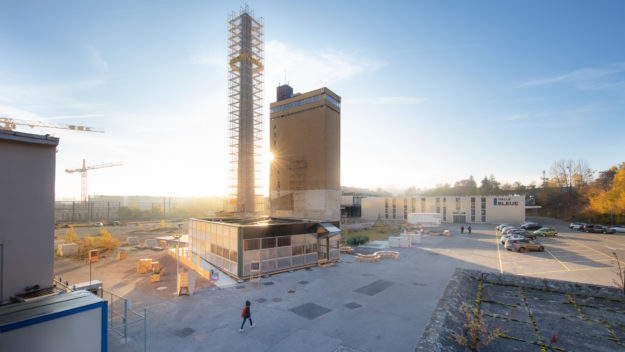Smart Living Lunch
This presentation of Yolaine Adihou on 16 September from 11:00 to 12:00 in Fribourg introduces the French-Swiss LowNeX thesis which develops an exergy-based decision support tool to model and optimise low temperature thermal networks. With the collaboration of industrial partners, SCDC (Société Chambérienne de Distribution de Chaleur, ENGIE Solutions), Groupe E SA, the models are tried and tested in order to formulate an explicit analytic expression of exergy losses as a function of geometric and thermo-hydraulic parameters. The latter enables to propose specific recommendations for the design (BlueCAD project) and the operation of low temperature networks by optimizing thermo-hydraulic flow distribution.
Exergy allows us to measure on a common basis the quality of the energy used and to quantify the multiple losses generated from extraction to final use by the consumer. It takes into account the environment interacting with the system under consideration. The reduction of the exergy content required to heat and cool buildings having a direct impact on primary energy consumption, a growing interest is carried on low exergy heat valorization approaches as a possibility to shape a sustainable built environment designed with high performance buildings.
In this context, low temperature district heating networks can provide a highly efficient low carbon heat supplier with great potential in improving heat distribution while minimizing exergy losses. However, at the political scale, only the canton of Geneva defined exergy efficiency as a criteria for rational energy use in its mid-2000s Energy Law. In fact, reasons explaining the low use of exergy both economically and politically are not only to be found in the abstraction of the concept but also as it rarely gives explicit details on district heating systems design and operation. Moreover, most of exergy assessments are based on the assumption of neglecting pressure losses whereas low temperature district heating networks usually operate at low differential temperature corresponding to high flow rates and then significant pressure losses. Consequently, the latter are no longer negligible when compared to thermal losses.
In summary, many research projects use the concept of exergy for system analysis in various fields, but no explicit formulation that meets industry expectations currently exists for thermal networks. The LowNeX thesis focuses on determining a methodological framework, in line with industry realities, to design networks for an optimal thermo-hydraulic flow distribution by addressing an explicit analytic expression of exergy losses as a function of geometric and thermo-hydraulic parameters.
The smart living lunches take place once a month from 11 am to 1 pm in Fribourg to present the research activities of the Smart Living Lab. A networking lunch is served after the presentation. These events are designed for the Smart Living Lab's community.

